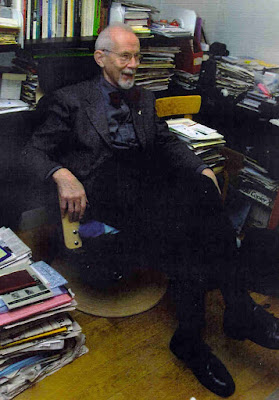Existential therapists born in the 1920s
Centenary seminars
1. Martti Siirala
24 November 1922 – 18 August 2008
‘Who are you? Could it be that you might be...?’
Might Daseinsanalysis become Diahermeneutics?
Anthony Stadlen
assisted by Aleš and Šárka Wotruba
conducts by Zoom
Inner Circle Seminar No. 278
Sunday 22 January 2023
10 a.m. to 5 p.m.
 |
| Martti Siirala 1922–2008 |
‘violent elements in the absolutist claims for “Daseinsanalysis” to a direct access to the phenomena in an adequate, undistorted way.’
‘has however essentially contributed to the unreducibility of human bodily existing.’
How seriously should we take this forty-three-year-old criticism of Daseinsanalysis by Siirala? Was it true of pioneers such as Medard Boss or Gion Condrau? Is it true of some, or all, Daseinsanalysts today? If true, can this be remedied, or is it a necessary consequence of the basic assumptions of Daseinsanalysis?
What are these ‘absolutist claims’? Not all is necessarily as it may first appear.
Gion Condrau was invited as the central figure of the Fifth Conference of the Society for Existential Analysis (SEA) in 1992. He explained that trainees in the Zürich Daseinsanalytic Institute were examined on their ability to analyse dreams: without meeting or communicating with the dreamer, without being told the dreamer’s associations to the dream, and without being told anything else except the reported dream and the dreamer’s age and sex.
Sarah Young questioned this in Existential Analysis:
‘Ultimately it must be for the dreamer to decide on the meaning of their dream. So why this exercise?’Condrau’s reply was unequivocal:
‘If we did, indeed, base our thinking on the idea that the dreamer decides on the meaning of his/her dream, this would open the doors wide to a subjectivistic phenomenology. Isn’t it precisely the essence of neurotic (or psychotic) perception, namely not to be able to distinguish phenomena from personal prejudices or projections?’
‘Well, what do you do if I make an unintelligible utterance to you? You ask me, don’t you? Why should we not be allowed to do the same thing, ask the dreamer what his dream means? [...] So the dreamer himself should also tell us what his dream means.’
‘Or are there perhaps in reality no dream symbols at all?’ (‘Oder gibt es am Ende in Wirklichkeit gar keine Traumsymbole?’)
‘They allow us in certain circumstances to interpret a dream without questioning the dreamer [...] But do not let yourselves be seduced by this. […] Interpretation based on a knowledge of symbols is not a technique which can replace or compete with the associative one. It forms a supplement to it […].’
‘Martin Heidegger in the Zollikon seminars conducted with Medard Boss defined the phenomenological method as “essential vision” and thus made it easy for authority-persons to claim “essential seeing” for themselves.’
‘prevents clear insight into the phenomenological hermeneneutics of Dasein’.
‘Within phenomenology, neither are conclusions drawn, nor are dialectical mediations allowed.’
‘[...] if it is correct that “dialectic is a genuine philosophical embarrassment” as Being and Time says, [...] tautology is the only possibility for thinking what dialectic can only veil.’
‘Dialectic is the dictatorship of the questionless. In its net every question is smothered.’
‘The dialectic is not hidden, however. On the contrary, it is perfectly open, for, in a sense, it is the rationality used by every person all the time. But this is true only in a sense. For to reason dialectically means to reason aware of the pattern of reasoning. And its very openness causes it to be overlooked. In so far as it is a mystery, it is hidden in a clear light, for its pattern is to be found in the clarity that reveals and conceals it.’
‘If one is able to read Heraclitus from out of the Parmenidean tautology, he himself then appears in closest proximity to the same tautology, he himself in the entrance to a single way which gives access to Being.’
No comments:
Post a Comment